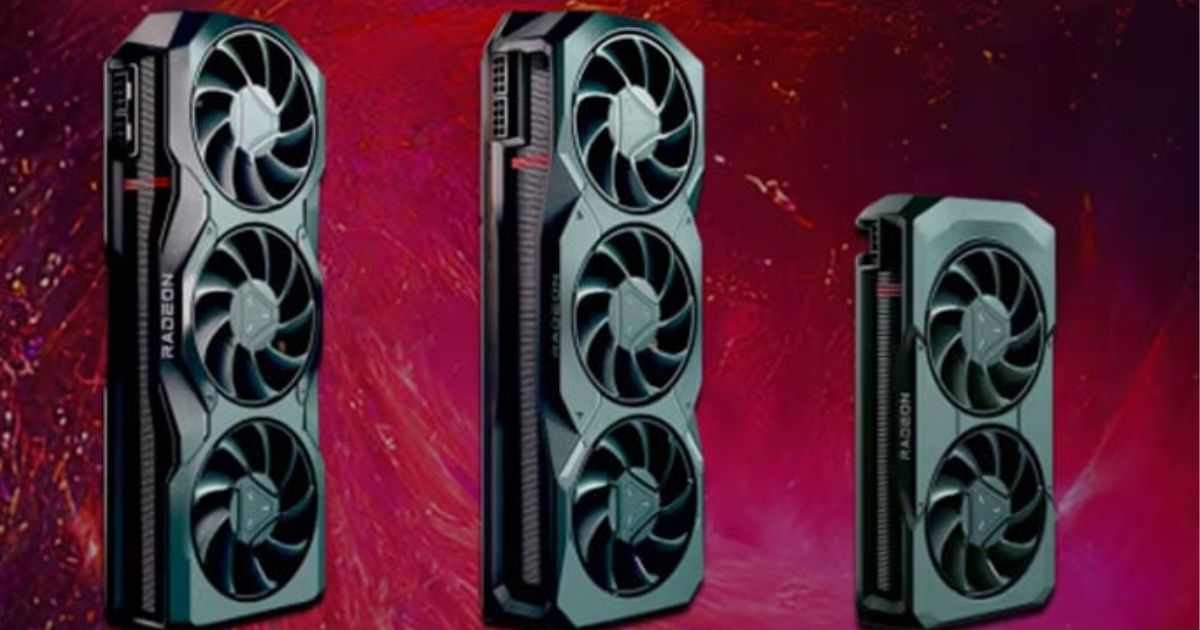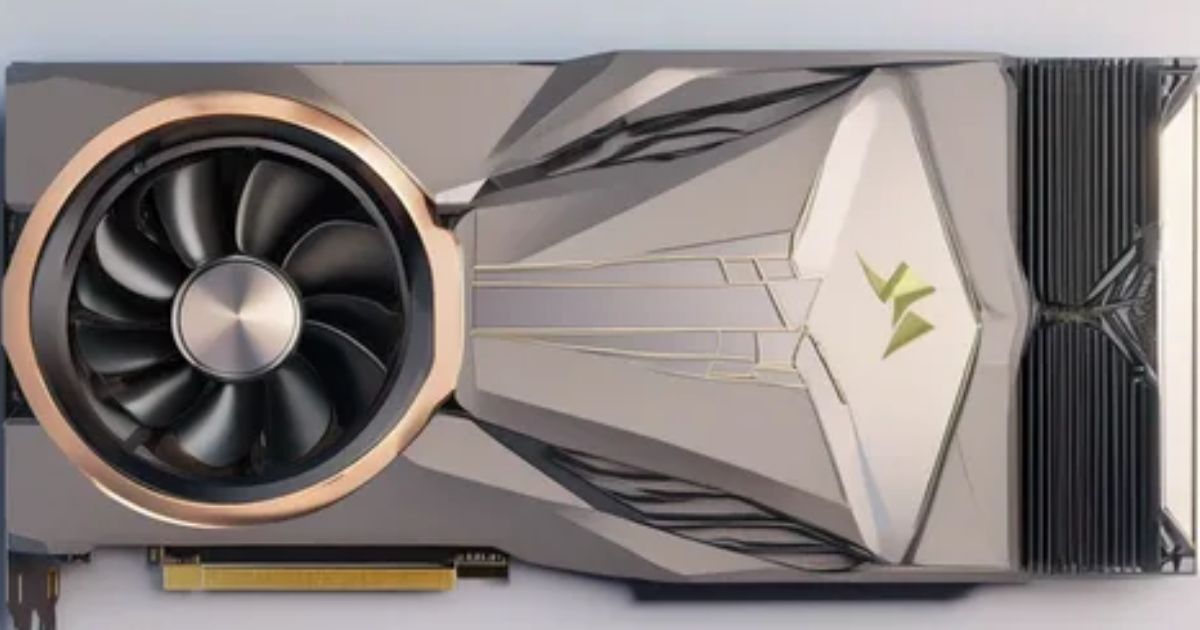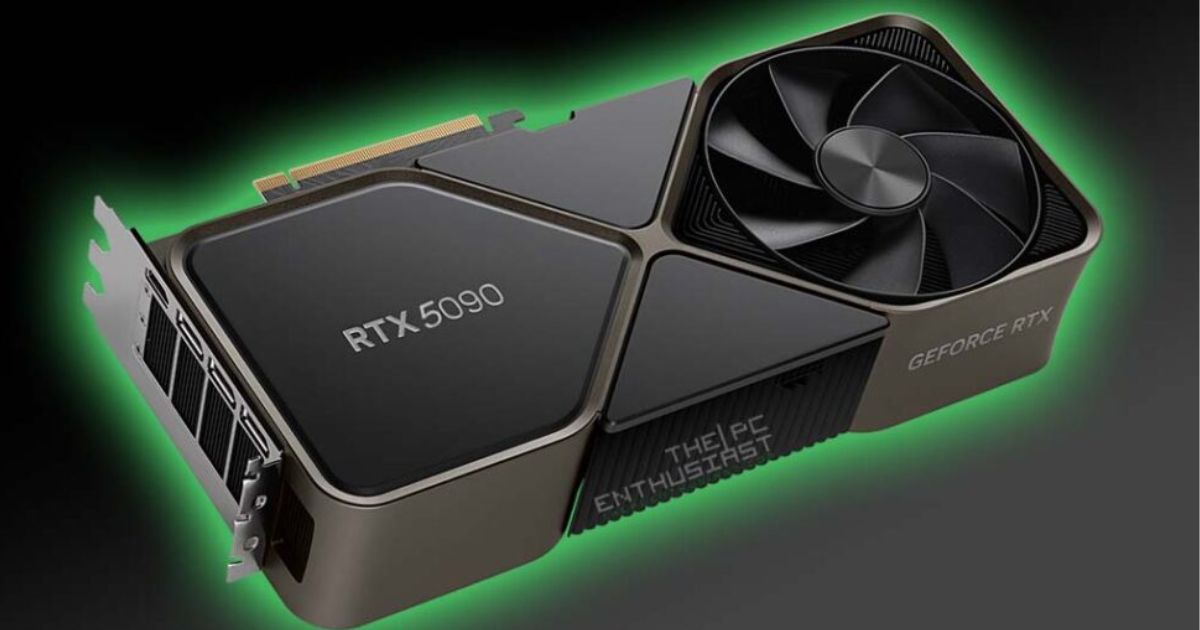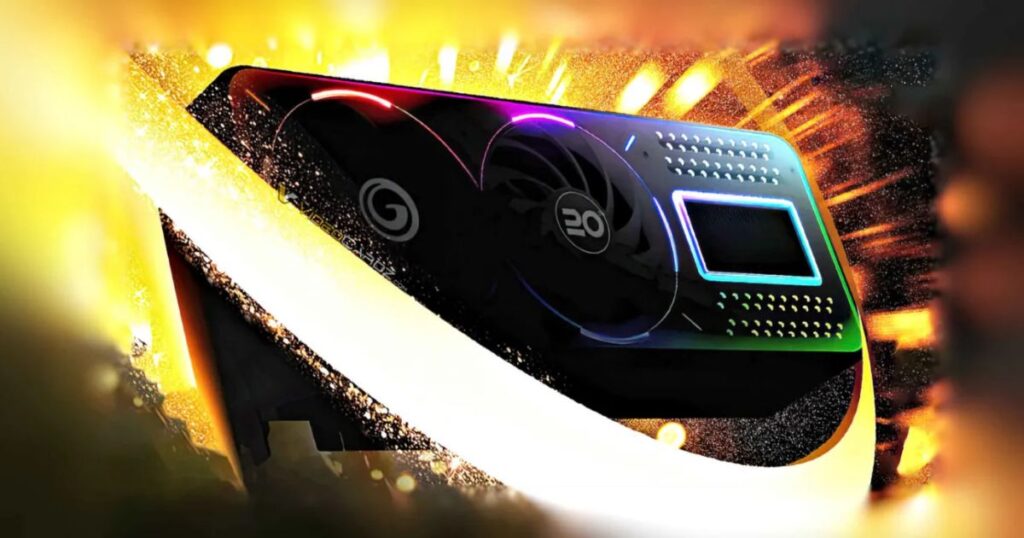When NVIDIA launched the 10 series graphics card release date in 2016, it marked a significant milestone in graphics card technology. Powered by the innovative Pascal architecture, these GPUs delivered a powerful blend of improved performance, energy efficiency, and new features that revolutionised gaming and content creation.The 10 Series quickly became the go-to choice for gamers, streamers, and professionals alike, offering incredible graphics power at a range of price points. From the flagship GTX 1080 Ti to the budget-friendly GTX 1050, this generation set new standards and raised expectations for what a graphics card could do.
In this article, we’ll explore the release dates, key features, and lasting legacy of the 10 series graphics card release date, a lineup that not only pushed the boundaries of what GPUs could achieve but also laid the foundation for the modern graphics cards we use today.
The Road to the 10 Series
Before the NVIDIA GeForce 10 Series took the spotlight, the 900 Series ruled the GPU market with solid performance and efficiency improvements. Built on the Maxwell architecture, the 900 Series brought notable advances over previous generations, including better power efficiency and strong 1080p gaming performance. However, as games became more demanding and new technologies emerged, the need for a more powerful and efficient architecture grew.Enter the Pascal architecture, NVIDIA’s next big leap forward. Announced in 2016, Pascal promised significant improvements in speed, power consumption, and feature support. It was designed to take advantage of the latest 16nm FinFET manufacturing process, allowing for more transistors in a smaller space, which meant better performance and thermal efficiency.
Pascal also introduced support for cutting-edge technologies such as Simultaneous Multi-Projection (enhancing VR and multi-monitor gaming), VR readiness, and improved DirectX 12 and Vulkan API support. These advancements allowed the10 series graphics cards to outperform its predecessors while consuming less power, Gift The Fun With Uno Gift Code a win-win for gamers and content creators.This foundation set the stage for the launch of the GeForce 10 Series, which would go on to redefine what gamers expected from their graphics cards and solidify NVIDIA’s dominance in the market for years to come.
GeForce 10 Series Release Timeline
The NVIDIA GeForce 10 Series launched over nearly two years, rolling out a lineup of GPUs that covered everything from budget builds to high-end gaming rigs. Each card brought unique strengths and innovations, shaping the PC gaming landscape dramatically. Here’s a detailed look at when each major GeForce 10 Series graphics card was released and what made them stand out:

GTX 1080 — May 27, 2016
The flagship of the initial 10 Series launch, the GTX 1080 was a game-changer. Powered by Pascal architecture and built on the 16nm FinFET process, it delivered a massive leap in performance compared to the previous generation GTX 980. With 2560 CUDA cores and 8GB of fast GDDR5X memory, the GTX 1080 enabled ultra-settings 1440p and even 4K gaming with impressive frame rates. It also introduced features like Simultaneous Multi-Projection, GPU market enhancing VR and multi-monitor setups. For many, the GTX 1080 set a new standard for high-end gaming GPUs.
GTX 1070 — June 10, 2016
Just two weeks after the 1080, NVIDIA released the GTX 1070, targeting the upper-midrange market and using the same Pascal architecture but with slightly fewer cores (1920 CUDA cores) and 8GB of GDDR5 memory, the 1070 balanced excellent performance with better affordability. It quickly became a favourite for 1440p gamers and offered a strong alternative for VR enthusiasts on a budget. Its efficiency and power consumption also made it attractive for smaller builds.
GTX 1060 — July 19, 2016
The GTX 1060 launched as NVIDIA’s answer to the mainstream market, aiming to provide solid 1080p and even entry-level 1440p performance at a more accessible price point. It featured 1280 CUDA cores and came in 3GB and 6GB variants of GDDR5 memory, catering to different user needs. The 1060 was praised for its excellent power efficiency and performance-per-dollar ratio, quickly becoming one of the best-selling graphics cards of the generation.
GTX 1050 and 1050 Ti — October 25, 2016
These entry-level cards brought Pascal’s efficiency and modern features to budget-conscious gamers and those upgrading older systems. The GTX 1050 Ti, with 768 CUDA cores and 4GB of GDDR5, was ideal for smooth 1080p gaming on modest settings, while the GTX 1050 offered slightly lower specs but at an even lower price point. Both cards required minimal power, often running without external power connectors, making them perfect for small form factor PCs and laptops.
GTX 1080 Ti — March 10, 2017
Topping the 10 Series lineup, the GTX 1080 Ti was NVIDIA’s answer to enthusiasts demanding the best performance without jumping to the Titan lineup. With 3584 CUDA cores and a whopping 11GB of GDDR5X memory, it outpaced the GTX 1080 by a significant margin. The 1080 Ti was the go-to card for 4K gaming and VR enthusiasts seeking buttery-smooth frame rates and future-proofing. It combined top-tier performance with a price far lower than NVIDIA’s Titan cards, making it a legend in the enthusiast community.
Titan X (Pascal) — August 2, 2016
The Titan X Pascal was NVIDIA’s ultra-high-end GPU, released shortly after the GTX 1080. Featuring 3584 CUDA cores and 12GB of GDDR5X memory, it was designed primarily for professionals and creators needing extreme compute power alongside gamers wanting the absolute best. This card excels at 4K gaming, VR development, AI research, and complex rendering tasks. While pricey, it pushed the boundaries of what GPUs could do at the time.
Titan XP — April 6, 2017
Building on the Titan X Pascal, the Titan XP arrived with slightly improved clock speeds and efficiency, maintaining 3584 CUDA cores and 12GB of GDDR5X. Targeted at the professional and enthusiast market, the Titan Xp was NVIDIA’s last Titan card in the 10 Series family, offering blistering performance for gaming and workloads like deep learning, 3D rendering, and scientific simulations.
Each release expanded NVIDIA’s reach, covering a broad spectrum of gamers and professionals. The 10 Series’ combination of cutting-edge architecture, performance, and efficiency set a new benchmark in GPU history.
Key Features of the 10 Series
The NVIDIA GeForce 10 Series introduced several groundbreaking characteristics that distinguish it from earlier generations and helped define modern GPU standards. These innovations contributed to the series’ popularity and long-lasting impact on gaming and professional graphics.
Pascal Architecture
At the heart of the 10 Series was the new Pascal architecture, designed to deliver significantly improved performance and power efficiency. Built on a 16nm FinFET manufacturing process, Pascal allowed for more transistors to fit on the chip while reducing power consumption and heat generation. This meant higher clock speeds, better thermal performance, and quieter operation compared to the older Maxwell-based 900 Series.
Enhanced Performance and Efficiency
Thanks to Pascal’s design and the 16nm fabrication, How to Boost Your Gameplay Against The Storm Royal Resupply the 10 Series GPUs offered substantial gains in raw processing power and performance-per-watt. Gamers could enjoy higher frame rates at higher resolutions with lower energy costs, which also translated to less strain on cooling systems and power supplies.
Support for Advanced APIs
The 10 Series brought improved compatibility with modern graphics APIs like DirectX 12 and Vulkan, enabling better utilisation of hardware resources and more detailed, realistic visuals. These APIs allowed developers to create richer gaming experiences with improved lighting, shadows, and effects.
VR-Ready Technology

NVIDIA optimised the 10 Series for Virtual Reality (VR) gaming and applications by introducing features like Simultaneous Multi-Projection, which enhances performance in multi-display setups and VR headsets by efficiently rendering multiple views at once. Street Fighter 6 | Street Fighter In Online This reduced latency and improved immersion, making the 10 Series ideal for VR enthusiasts.
GDDR5X Memory
Higher-end 10 Series cards, like the GTX 1080 and 1080 Ti, utilised faster GDDR5X memory, Ghost Of Tsushima PC | Ghost Of Tsushima Steam Online which significantly boosted memory bandwidth compared to standard GDDR5. This increase improved texture loading speeds and overall graphical performance, especially at higher resolutions.
Enhanced Cooling and Design
NVIDIA and its partners introduced new cooling solutions and refined card designs to support the increased performance while keeping temperatures in check. This helped maintain stable performance during long gaming sessions and allowed for quieter operation.
These key features made the GeForce 10 Series a landmark generation, delivering the power and efficiency gamers and professionals demanded, and setting a high bar for future GPUs.
Performance and Market Impact
The 10 series graphics card release date made a massive splash in the GPU market when it launched, setting new benchmarks for gaming performance, power efficiency, and feature innovation. Across the board, these graphics cards delivered significant improvements over the previous 900 Series, enabling gamers and professionals to push visual fidelity and frame rates to new heights.Performance-wise, flagship models like the GTX 1080 Ti offered a massive leap forward, efficiently handling 4K gaming and demanding VR applications with high frame rates and smooth gameplay. Even mid-range cards like the GTX 1060 became household favourites, offering excellent 1080p performance at a price point accessible to many gamers. This balance of power and affordability helped the 10 Series dominate the market.
The 10 Series’ efficiency gains meant less heat and power consumption without sacrificing speed, making these GPUs attractive for compact builds and systems with limited cooling. This also broadened the appeal beyond hardcore gamers to content creators, designers, Get Ready: Horizon 6 Release Date and What It Means for Gamers and professionals who needed powerful yet energy-efficient GPUs for video editing, 3D rendering, and AI workloads.On the market impact side, the GeForce 10 Series solidified NVIDIA’s dominance in the discrete GPU space, pushing competitors like AMD to catch up with their architectures. The popularity of Pascal-based cards drove strong sales for NVIDIA, with some models, especially the GTX 1060, becoming some of the best-selling graphics cards ever.Moreover, the 10 series graphics card release date accelerated the adoption of VR gaming by delivering the power and features needed for a smooth, immersive experience. This helped expand VR’s reach and viability as a mainstream gaming platform.Overall, the 10 Series’ blend of performance, efficiency, and forward-looking features made it a milestone generation that influenced gaming and graphics technology for years to come.
Legacy of the GeForce 10 Series

The NVIDIA GeForce 10 Series left a lasting legacy that continues to influence the GPU industry and gaming community today. As the first lineup built on the Pascal architecture, it set new standards for performance, efficiency, and feature innovation that many future GPU generations have built upon.One of the most significant impacts of the 10 Series was its role in making high-performance gaming more accessible. Cards like the GTX 1060 brought capable 1080p and even 1440p gaming to a broader audience at affordable prices, helping to expand the PC gaming market. Meanwhile, the 10 series graphics card release date Ti and Titan Xp catered to enthusiasts and professionals who demanded top-tier power for 4K gaming, VR, and creative workloads.The 10 Series also played a crucial role in the rise of virtual reality gaming by delivering the necessary horsepower and technologies to reduce latency and improve immersion. Features like Simultaneous Multi-Projection showcased how hardware innovation could enhance new gaming experiences.
Additionally, the energy efficiency improvements pioneered by Pascal helped shift industry expectations toward greener, cooler, and quieter GPUs, a trend that continues with each new generation.Even years after its release, the GeForce 10 Series remains relevant. Many gamers still use these cards due to their solid performance, reliability, and driver support. Furthermore, the architecture set a foundation for NVIDIA’s future innovations, including the Turing and Ampere architectures that followed.In essence, the GeForce 10 Series wasn’t just a product line — it was a turning point that shaped how GPUs perform and what gamers expect, making it one of the most influential generations in PC graphics history.
Conclusion
The NVIDIA GeForce 10 Series marked a defining chapter in the evolution of graphics cards, delivering groundbreaking performance, efficiency, and features that reshaped the gaming and creative industries. From the powerhouse GTX 1080 Ti to the budget-friendly GTX 1050, the 10 Series offered options for every type of user, making high-quality gaming and advanced graphics more accessible than ever before.Thanks to the innovative Pascal architecture, these GPUs set new standards in power consumption and thermal management, enabling smoother gameplay and longer system lifespans. The 10 Series also played a pivotal role in popularising virtual reality, pushing immersive experiences into the mainstream.
Even years after its debut, the legacy of the 10 Series lives on, powering millions of gaming rigs worldwide and influencing the design of modern GPUs. Whether you’re a seasoned gamer, a content creator, or a tech enthusiast, the GeForce 10 Series remains a testament to NVIDIA’s commitment to pushing the boundaries of graphics technology.As the foundation for subsequent generations, the 10 Series reminds us how far GPU technology has come and sets the stage for the exciting advancements still to come.
FAQ
When was the NVIDIA GeForce 10 Series first released?
The first card, the GTX 1080, was released on May 27, 2016, marking the start of the 10 Series lineup.
What architecture powers the GeForce 10 Series?
The 10 Series is based on NVIDIA’s Pascal architecture, built on the 16nm FinFET manufacturing process.
Which GeForce 10 Series card is best for 4K gaming?
The GTX 1080 Ti and Titan XP are the top-performing 10 Series cards suitable for 4K gaming.
Is the GeForce 10 Series still good for gaming today?
Yes, many 10 Series GPUs still deliver solid performance, particularly with updated drivers and optimisations, for gaming at 1080p and 1440p.
What made the 10 Series stand out compared to previous generations?
The 10 Series introduced significant improvements in power efficiency, performance, VR readiness, and support for modern APIs like DirectX 12 and Vulkan.






